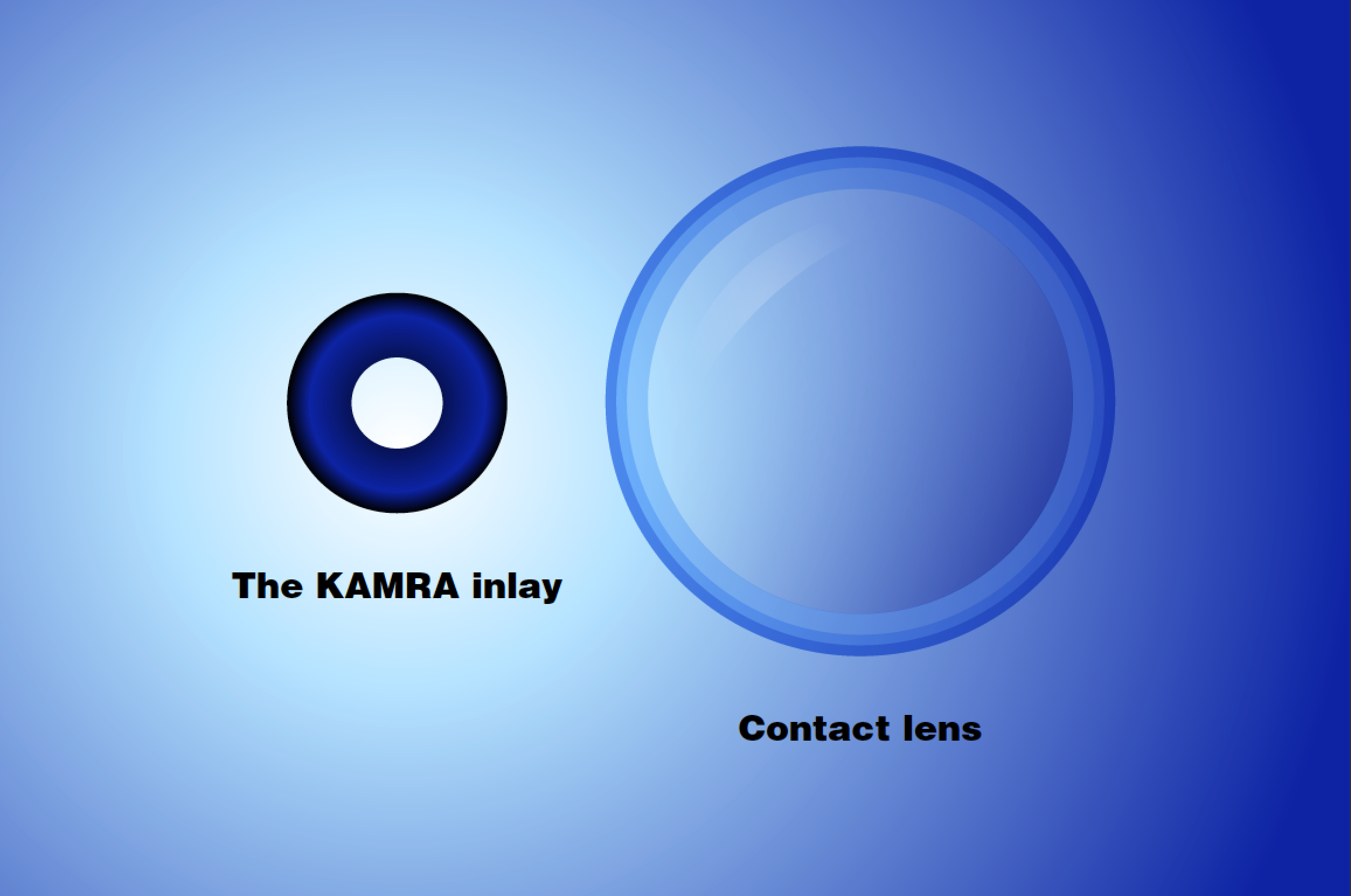Article
#21: Corneal Inlays for Presbyopia
Corneal inlays are a newer option for correction of decreased near vision in presbyopic individuals who desire improved spectacle-independent vision at all distances.
Corneal inlays are a newer option for correction of decreased near vision in presbyopic individuals who desire improved spectacle-independent vision at all distances.
Because corneal inlays are placed within the cornea, these are less surgically invasive than lens-based procedures. In addition, corneal inlays do not involve excimer laser ablation and no corneal tissue is consequently removed during their implantation. This is particularly relevant in patients whose corneas are too thin for LASIK or PRK (photorefractive keratectomy) procedures.

Another advantage of corneal inlays is that these can be easily explanted if patients are dissatisfied with the impact on their vision, returning them to or near their quality of vision before the implantation.
The Kamra inlay shown beside a contact lensCorneal inlays work by increasing the depth of focus or the refractive power of the central or paracentral part of the cornea. In some studies, corneal inlays have been combined with LASIK procedures to correct ametropia as either a simultaneous procedure or a 2-staged procedure. Corneal inlays are typically implanted into a patient’s nondominant eye only.
The first corneal inlay, the KAMRA™ inlay, was approved by the US Food and Drug Administration in April 2015. The KAMRA inlay is an opaque, ring-shaped inlay made of polyvinylidene fluoride and carbon. Two additional inlays, the Raindrop® Near Vision Inlay and the Flexivue Microlens™, are approved for use in Europe and are currently in the process of seeking regulatory approval in the United States.
Newsletter
Don’t miss out—get Ophthalmology Times updates on the latest clinical advancements and expert interviews, straight to your inbox.




